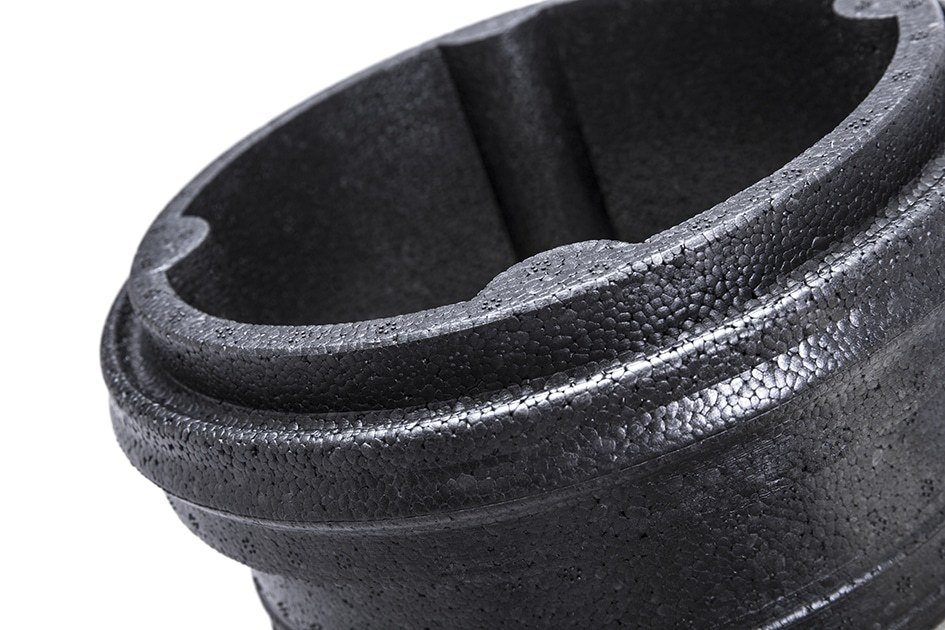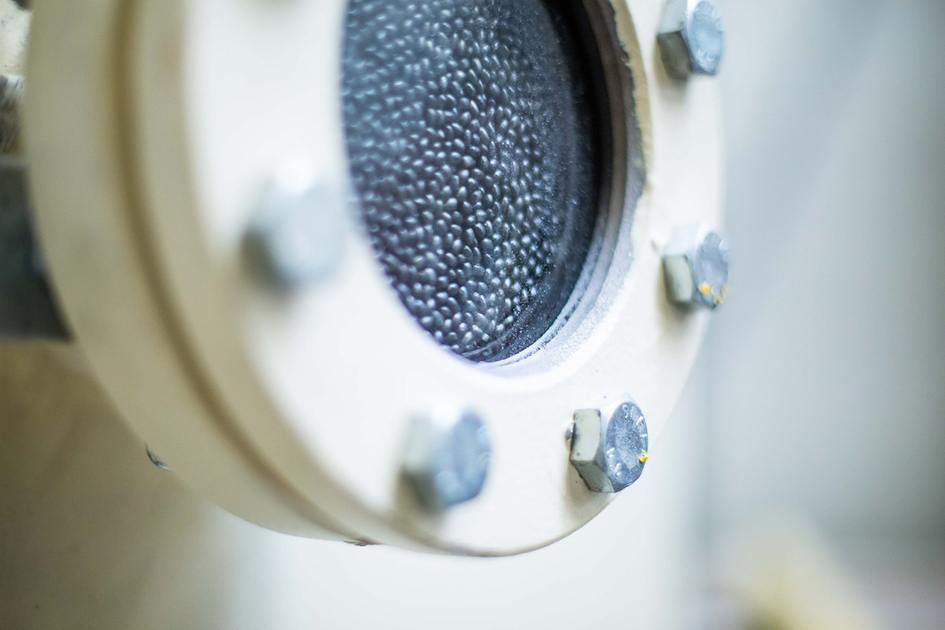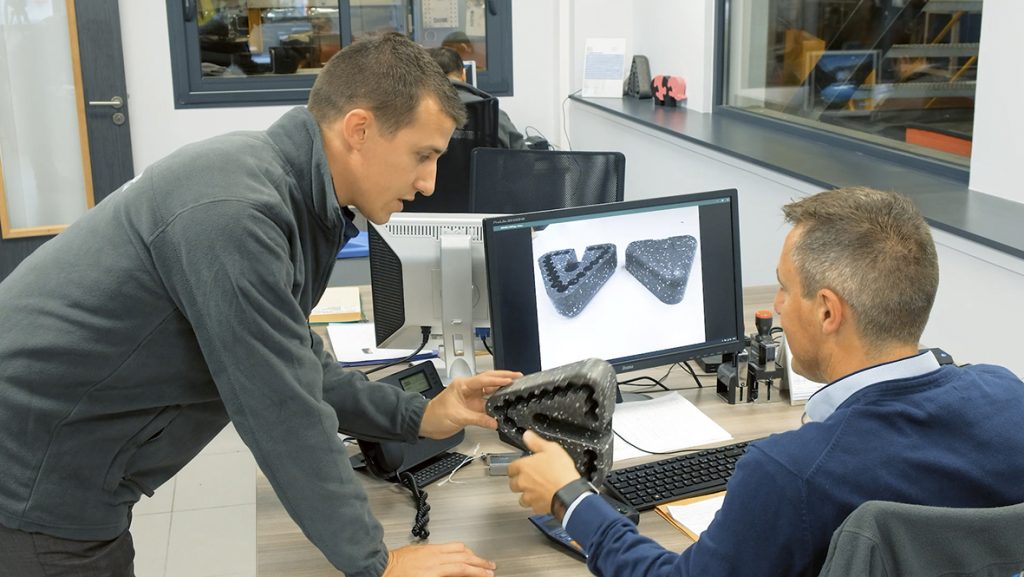The lightening of technical parts stands out today as one of the main strategies companies are using to optimize their designs.
Explained briefly, the term lightweight refers to the reduction of component weight in a product, which translates into a reduction of the overall design.
From better equipment performance to improved sustainability, reducing the weight of technical parts translates into a series of important efficiencies. As a result, the lightening of technical parts has become a priority for many manufacturers.
The current digital tools present an invaluable aid in providing designers with crucial information to implement these improvements, which are being applied across a number of industries, the automotive and aeronautical sectors being particularly highlighted.
Considering the contemporary importance of lightening technical parts, at Knauf Industries we want to share some tips about the issue, building up from our experience in designing and building technical items.
What is the importance of lightening technical parts?
As different key industries experience market uncertainty and new regulations regarding sustainability, the lightening of technical parts stands out as a decisive strategic decision with important impacts on many business areas.
While we mention many of these benefits below in this article, it’s worth expanding on the positive environmental impact of lightweighting, which causes a series of improvements in a company’s sustainability:
- Reduces the quantity of energy necessary to transport technical parts, as well as the finished product
- In the case of technical parts used in equipment in movement, reducing the weight of technical parts also means a reduction in the quantity of energy needed for the piece to move
- A complete design studio that leads to the lightening of technical parts typically includes the use of fewer materials in order to create the part
How to achieve the lightening of technical parts?
There are various strategies that companies are exploring in order to lightweight their technical parts, a choice that should be guided by each specific technical parts type.
As we see below in this article, designers and engineers are guided by increasingly precise technologies to aid them in coming up with better solutions.
However, two key decisions when considering the lightening of technical parts include material substitution and comprehensive design operations.
Material choice
The choice of material can make a crucial difference when it comes to reducing weight of technical parts.
Advancements in material technology are allowing for impactful material choices. For instance, the use of plastic foams can lead to weight reductions of up to 20 and 30%.
Design strategies
Current design strategies and technologies are allowing engineers and designers to reach unprecedented optimizations, including in the area of lightweighting.
Such is the case with generative design strategies and topology optimizations. Unlike traditional design processes, where simulation is used for verification purposes, designers are now using software to simulate product design operations at early stages.
This optimized exploration translates into accessing valuable information that can have an impact at the very start of a project.
As a result, key decisions in lightening of technical parts (such as the choice of material or replacement of assembly designs with single components) are accessible.
This eliminates a number of inefficiencies in design operations and promotes cost-cutting, helping designers lightweighting products and achieve the right balance with other important variables, such as the hardness of technical parts, the flexibility of technical parts, and their cost.
At the same time, other innovative design approaches can be incorporated when considering weight reductions. This is where eco-design comes in, which is defined as the incorporation of sustainability markers into design projects and is hailed by the European Commission as an efficient strategy to reduce up to 80% of a product’s environmental impact.
Applying eco-design in the development of technical parts might result in important lightweight benefits, including:
- Minimizing the number of raw materials present in a technical part
- Employing more lightweight materials
- Reducing the number of additional items (such as screws) by exploring smart, geometric, and custom-made solutions for technical parts
What materials are adequate for lightening technical parts or components?
While, again, the choice of materials will vary depending on each technical parts type, current explorations with plastic materials are providing favorable results in weight reduction in technical parts.
Thermoplastic materials in general, such as polypropylene or polyethylene, are being experimented with for reducing weight of technical parts.
But it’s the use of expanded plastic foams, in particular, that is offering the most promising effects. This is because lightness is perhaps the most prominent feature of expanded materials. For instance, EPP and EPS (which we explore further below) are composed of 98% and just 2% matter, providing further benefits beyond the much sought-after lightening of technical parts.
Plastic foam choices for lightening technical parts
EPS
Expanded Polystyrene A foam plastic material produced from small, solid beads of polystyrene and then expanded by using pentane as a blowing agent. While it’s derived from petroleum and natural gas byproducts, EPS presents outstanding sustainability benefits, including a low-emission manufacturing process, and is 100% recyclable. EPS is extremely lightweight, while also providing a very low thermal conductivity, low moisture absorption, excellent cushioning properties, and chemical resistance.
EPP
Expanded Polypropylene presents similar advantages to EPS in terms of light weight and 100% recyclability. It can be reheated and reused in molding processes without causing any structural damage to the core material. Apart from that it is a structurally more resistant material with the so called “shape memory”.
Considering their extraordinary characteristics, both EPS and EPP have been widely used as part of molded product design and manufacture in the creation of technical parts.
For instance, Knauf’s EPP and EPS technical parts for the automotive industry have been successfully included in bumpers, seats, interior components, and side impact protection systems.
Lightness vs Strength?
When considering the lightening of technical parts, designers and other parties involved must make sure they don’t make any compromises when it comes to strength, including the hardness of technical parts and flexibility of technical parts in their key decisions.
In this field especially EPP provides outstanding results in this area, as the material presents:
- Mechanical strength, which can be suited to suit specific applications and resulting in an impressive strength-to-weight ratio
- High compressive strength
- Energy absorption
- Impact resistance
- Good shape memory after the application of dynamic or static loads
As such, the use of advanced expanded plastic foams such as EPP and in some cases also EPS can result in reaching important weight reductions which exceed strength values of other designs.

4 Advantages of lightening products
- Reduce CO2 emissions related to the product transportation and movement. This must also be combined with sustainable materials that present low-emission production processes.
- Improvements in the overall performance and efficiency of working machines, particularly in the case of those with moving and transferring parts
- Energy savings
- General resource savings, including raw material resources
Which software can I use to calculate weight reduction?
As we’ve seen before, early calculations can make a crucial difference in generating optimized designs that achieve the lightening of technical parts.
There are a number of generative design technologies that companies can use as lightweighting tools in order to reduce material to a bare minimum and create almost instant material behavior simulations. Designers should consider an approach that incorporates CAD and CAE working in parallel, as well as flow optimization software.
Some useful software platforms currently used include Autodesk’s platform for innovation, Solid Edge technology for convergent modeling and Altair OptiStruct™.
All in all, the possibilities for lightening technical parts today are multiple, providing a fertile ground for companies looking to optimize their products. The use of plastic foams stands out among the most successful strategies to achieve so and, at Knauf, we can help you untap this significant competitive advantage.
Learn more about them by downloading our free Technical Manual about Expanded Foam in the Industry.




